Yoshitomo Nara’s skittish universe takes over the Hayward Gallery
‘Yoshitomo Nara’ at the Hayward Gallery in London explores four decades of the Japanese artist’s beloved oeuvre
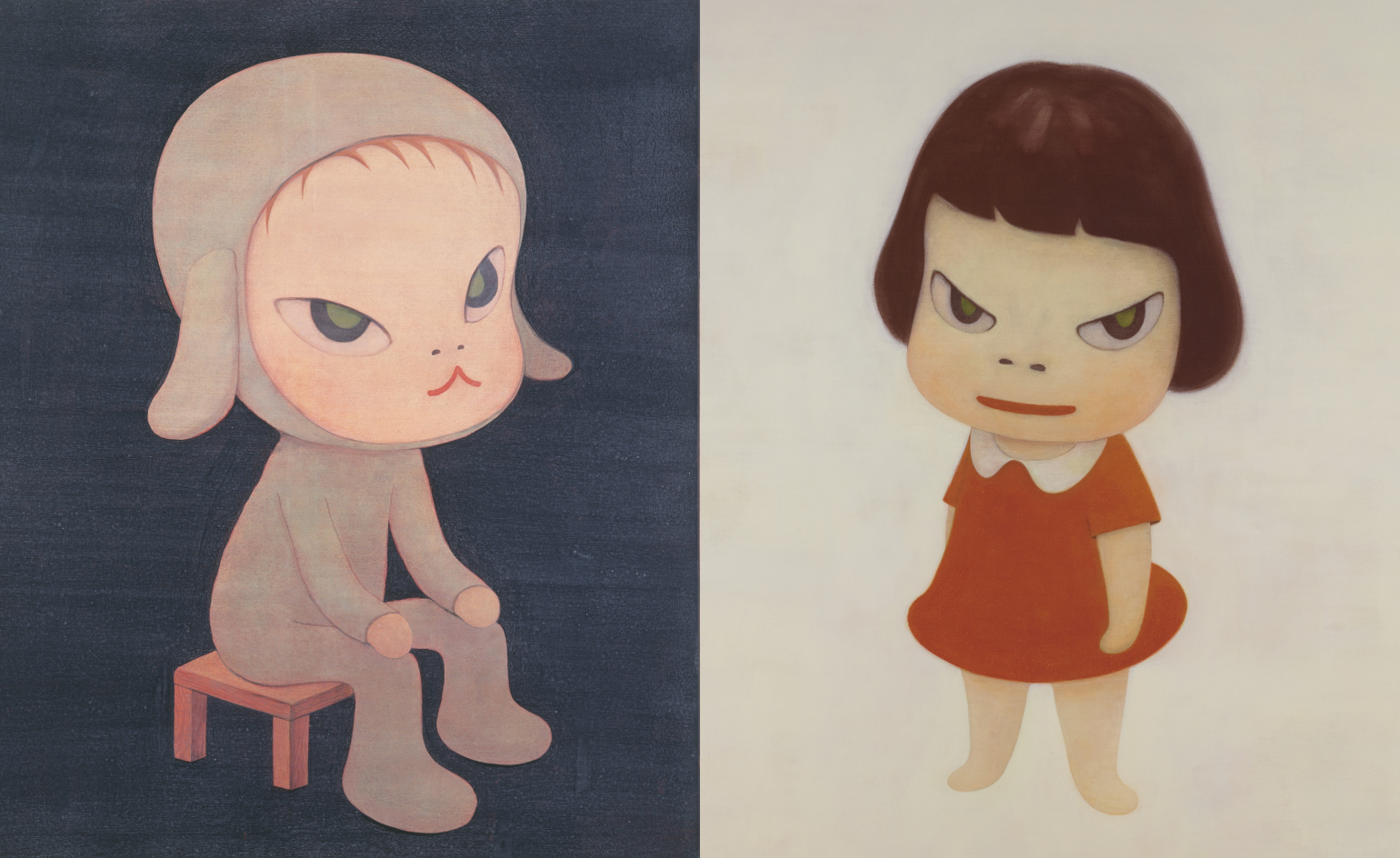
Two days before his Hayward Gallery debut, Yoshitomo Nara was in Liverpool, taking in the surprise duet between Bruce Springsteen and Sir Paul McCartney at Anfield Stadium. A full-circle moment, perhaps, considering his capsule collection with McCartney’s daughter, Stella, in late 2022. That’s Nara: quietly cool, pop-culture fluent, and forever rock and roll. For the press preview, he steps in wearing a bright green Sukajan-style jacket and is instantly swarmed by admirers. It’s almost hard to believe this is his first UK solo show in a public gallery – long overdue.
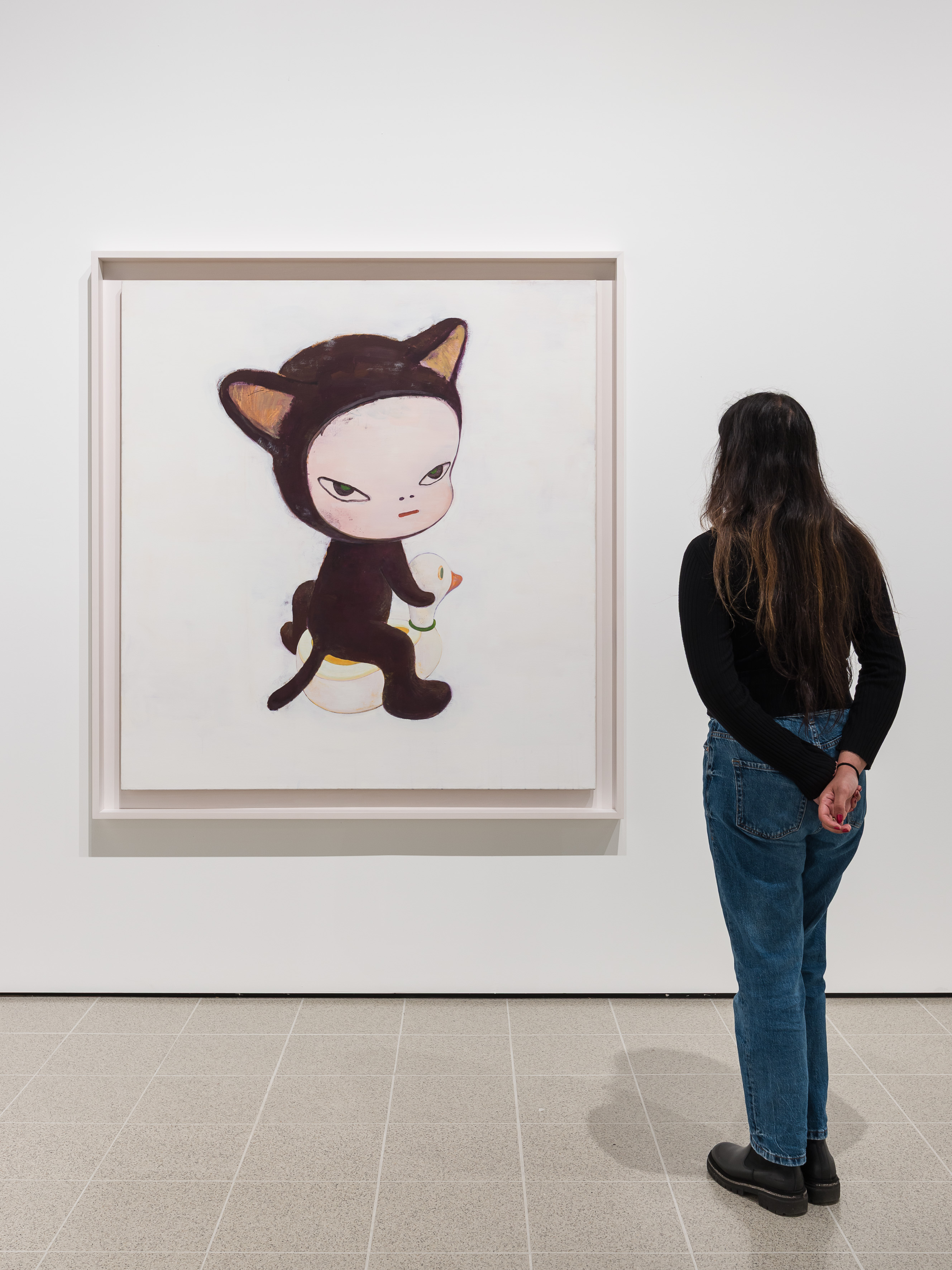
Installation view of Yoshitomo Nara. Harmless Kitty, 1994. Photo: Mark Blower. Courtesy the artist and the Hayward Gallery
Titled ‘Yoshitomo Nara’, the retrospective, which expands on the blockbuster exhibition from the Guggenheim Museum Bilbao and Museum Frieder Burda, Baden-Baden, reveals and explores the intriguing world of the artist through a diverse array of artworks, including paintings, drawings, sculptures and installations that span the past four decades. Nara’s conceptual and formal processes come to the forefront through a room display that adheres to his exact specifications, alongside a soundtrack with personal picks. Part of his record collection is displayed right by the entrance, featuring everything from David Bowie to Mary Hopkin and Neil Young.
‘Yoshitomo Nara’ at the Hayward Gallery
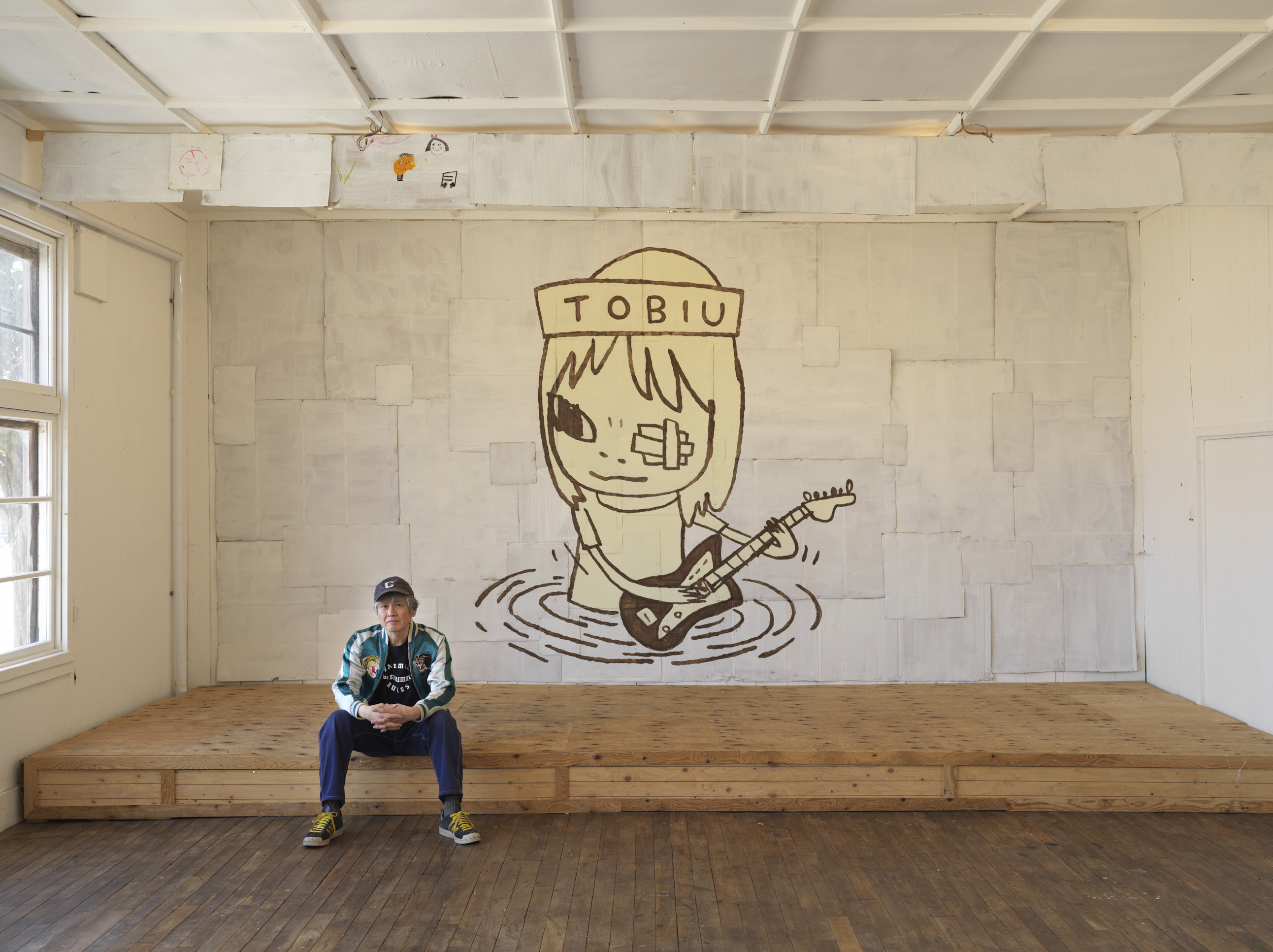
Yoshitomo Nara seated in front of TOBIU, 2019, donated by the artist to the TWO x TWO for AIDS and Art auction, 2021. Patched corrugated board mounted on wood
Many will recognise Nara’s signature wide-eyed, large-headed children from books, prints, or screens – but encountering them in person feels completely different. One can’t help but wonder: what lies behind their operatic gaze? Appearing melancholic, at times defiant, there seems to exist a profound sense of nostalgia and familiarity within the Japanese artist’s allegorical iconography, which reveals more about his inner world than initially meets the eye.
Honest memories of his childhood, radical coming-of-age experiences and a curious outlook in the realms of music, art and popular culture are just a few of the things that make Nara’s universe not so much esoteric but inviting. Above all, it’s his raw portrayal of the human condition – beautiful, frail and, at times, bewildering – that renders his creations so hypnotising.
‘I don’t think when I create, my work just comes to me. I’m not conscious of what I’m doing in the moment. It’s all hindsight. Only after a piece is finished do I start to understand the emotions I was trying to express.’
Yoshitomo Nara tells Wallpaper*
Rather than being arranged chronologically, the works at ‘Yoshitomo Nara’ revolve around the artist’s use of technique and materials, offering insight into his creative process, which typically commences without a predetermined concept, responding organically to the characteristics of the canvas material, which can range from cardboard to ceramics.
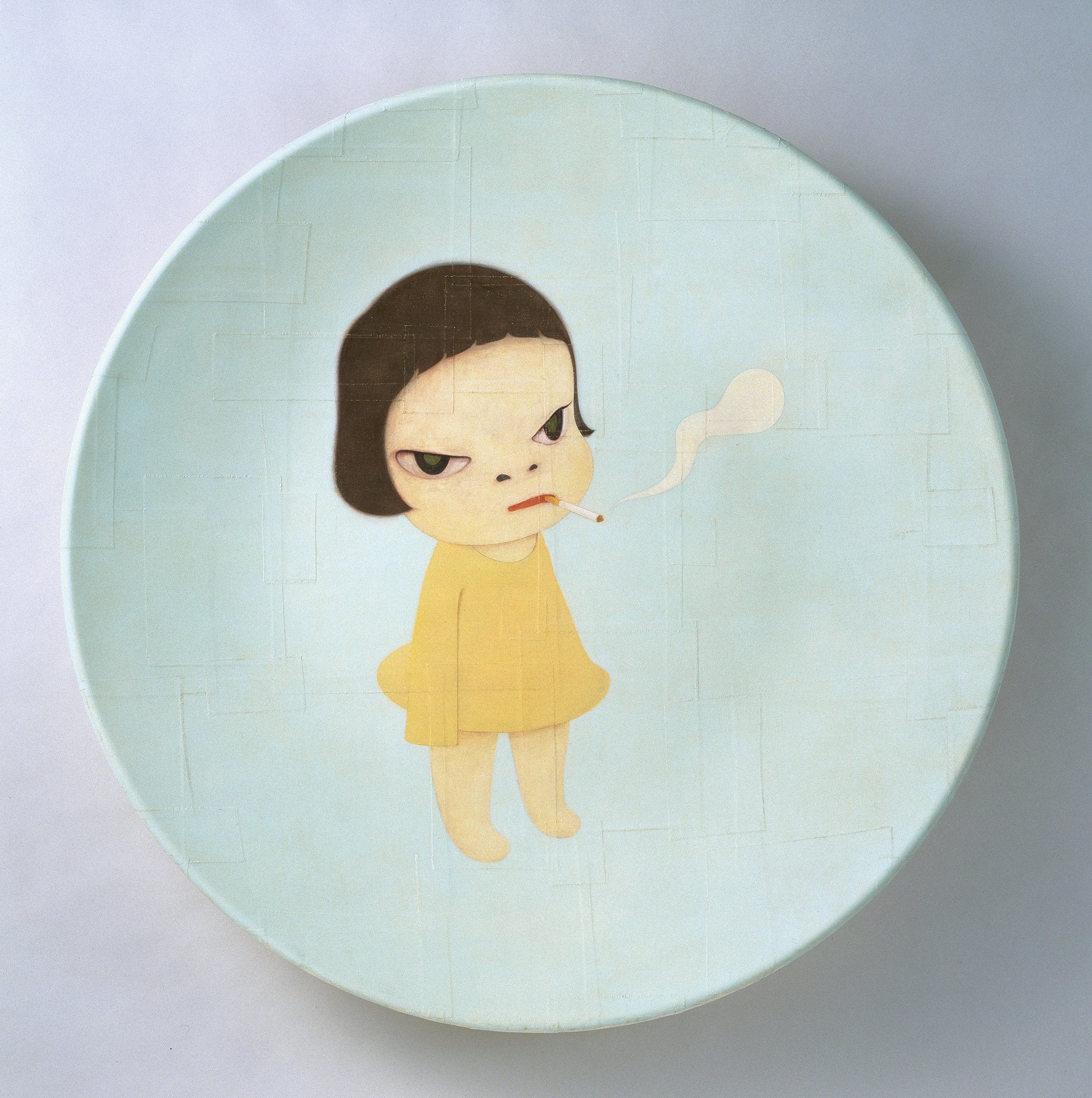
Too Young to Die, 2001, by Yoshitomo Nara. Acrylic on cotton mounted on fiber-reinforced plastic (FRP)
‘The show is loosely thematic, and what’s fascinating is seeing how Nara-san moves back and forth across techniques, subjects, and concerns,’ says Yung Ma, senior curator of the Hayward Gallery. ‘Through his work, Nara is trying to express his innermost thoughts. That’s what makes it so powerful.’
Within the first room, a mixed-media installation titled My Drawing Room (2008) emerges as a dollhouse-like structure filled with objects that have deeply influenced the artist, symbolising his curious nature. The house motif recurs throughout Nara’s body of work, particularly in the 1980s, where triangular-roofed structures harken back to the single-story dwelling of his childhood.
Receive our daily digest of inspiration, escapism and design stories from around the world direct to your inbox.
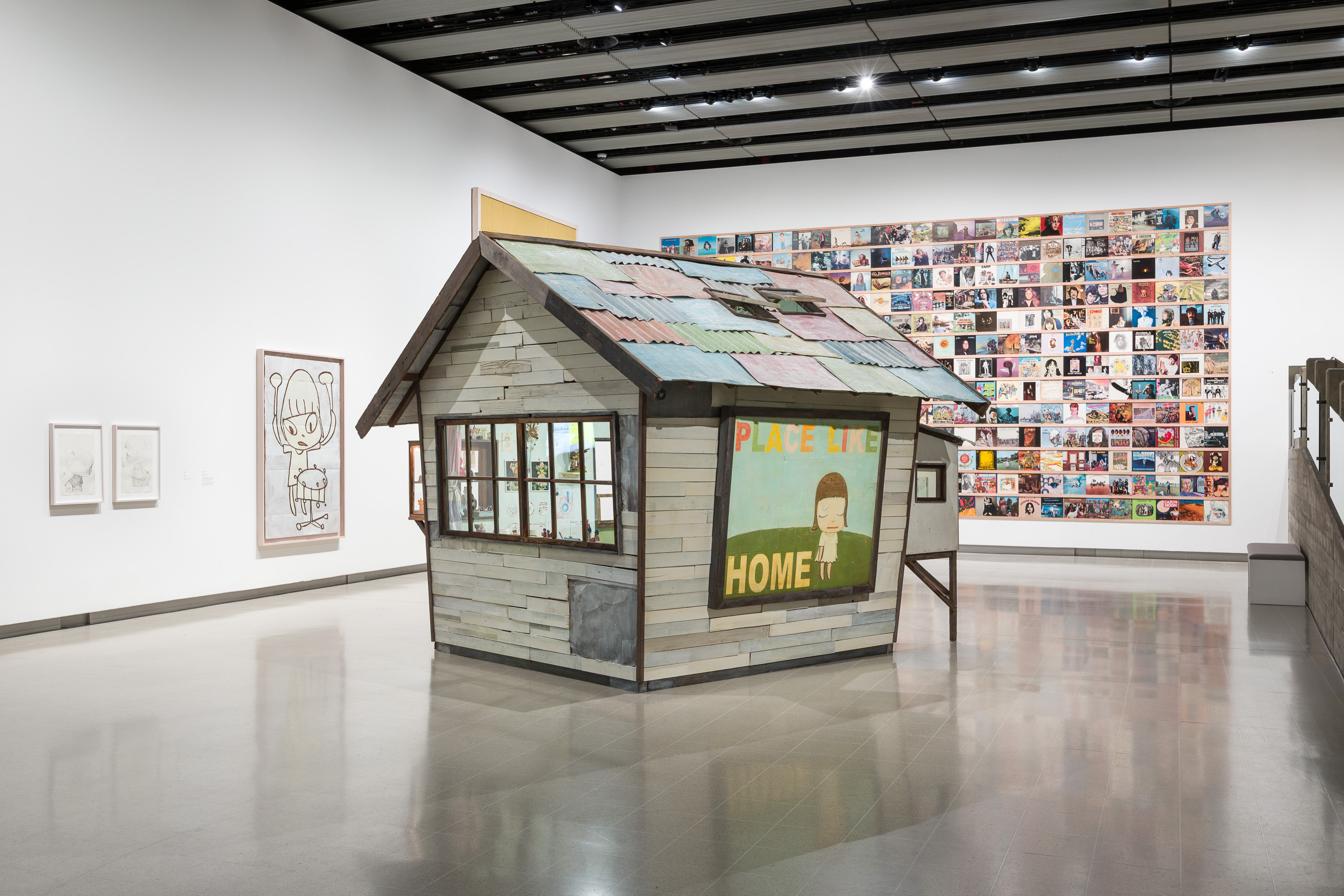
My Drawing Room, 2008, Bedroom Included, 2008, by Yoshitomo Nara. Installation, mixed media
It’s nearby where visitors can begin to connect with Nara’s animal friends, such as his characteristic white dog with floppy ears, reimagined as an abstract papier-mâché sculpture in Pray (1991). Meanwhile, his deep-seated passion for music permeates the entire showcase. With a childhood characterised by solitude, Nara’s connection to music took root when, at the age of 11, he began tuning into radio broadcasts from a nearby US airbase, introducing him to international singer-songwriters whose music resonated with him on a sensory, non-verbal level.
Throughout his artistic journey, song lyrics have served as a conduit for understanding diverse cultures, as seen in his allusions to John Hiatt’s Overcoats album cover from 1975 through recurrent puddles symbology, evident in In the Deepest Puddle II (1995), or in his series of reinterpretations of The Ramones as canine figures, perfectly seen in Joey (2008).
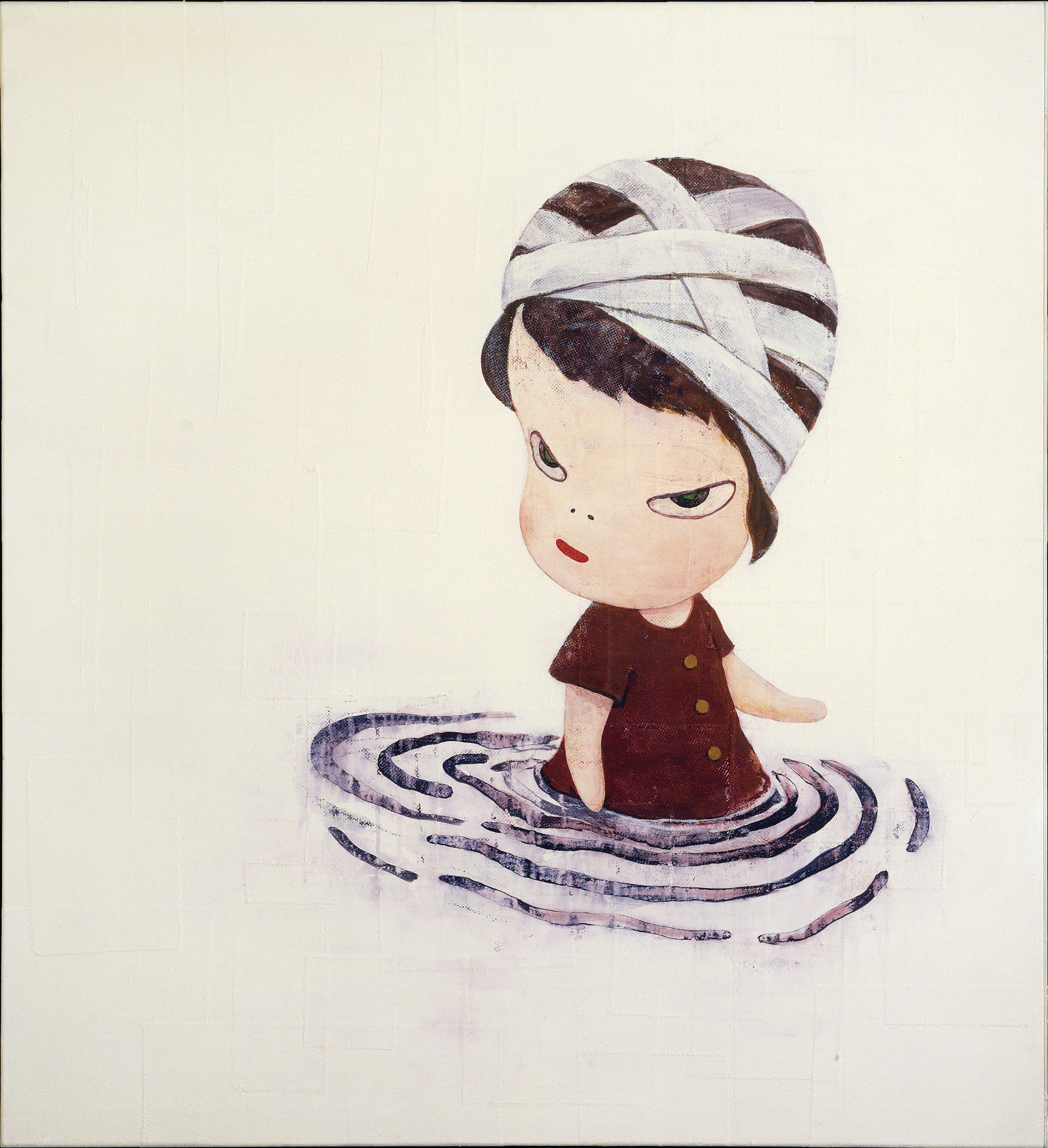
In the Deepest Puddle II, 1995, by Yoshitomo Nara. Takashi Ryutaro Collection. Acrylic on cotton mounted on canvas

Yoshitomo Nara. Joey, 2008, by Yoshitomo Nara. Pencil on paper
Nara’s cherished children’s figures are scattered around the exhibition, some peering over walls while others meet your gaze directly at eye level. Over his career, the evolution of his artistic style becomes apparent in the eyes of these endearing characters. Initially, in works like Ships in Girl (1992), the eyes appeared flat and roughly outlined in black, gradually transforming into an otherworldly depth, a shift influenced by his time at Kunstakademie Düsseldorf under the tutelage of AR Penck.
‘After coming to Germany, I stopped being concerned with how others might interpret my work and began to paint only what held personal significance for me,’ remembers the artist in an autobiographical essay. Consequently, his gender-ambiguous characters leap from the canvas against flat backgrounds and through glistening pops of colour, as showcased in pieces like Blankey (2012) or Midnight Tears (2023).
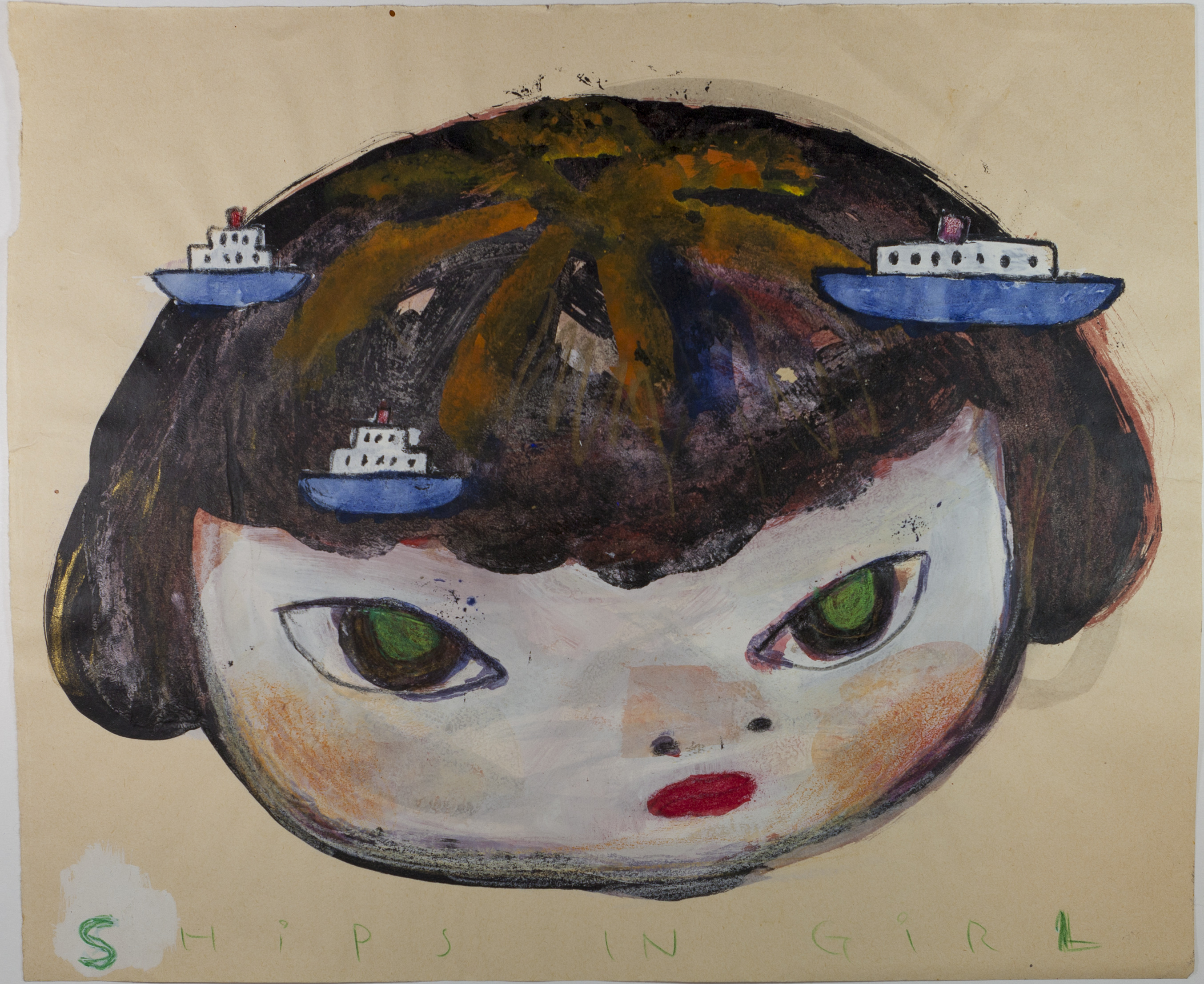
Ships in Girls, 1992, by Yoshitomo Nara. Acrylic and colored pencil on paper
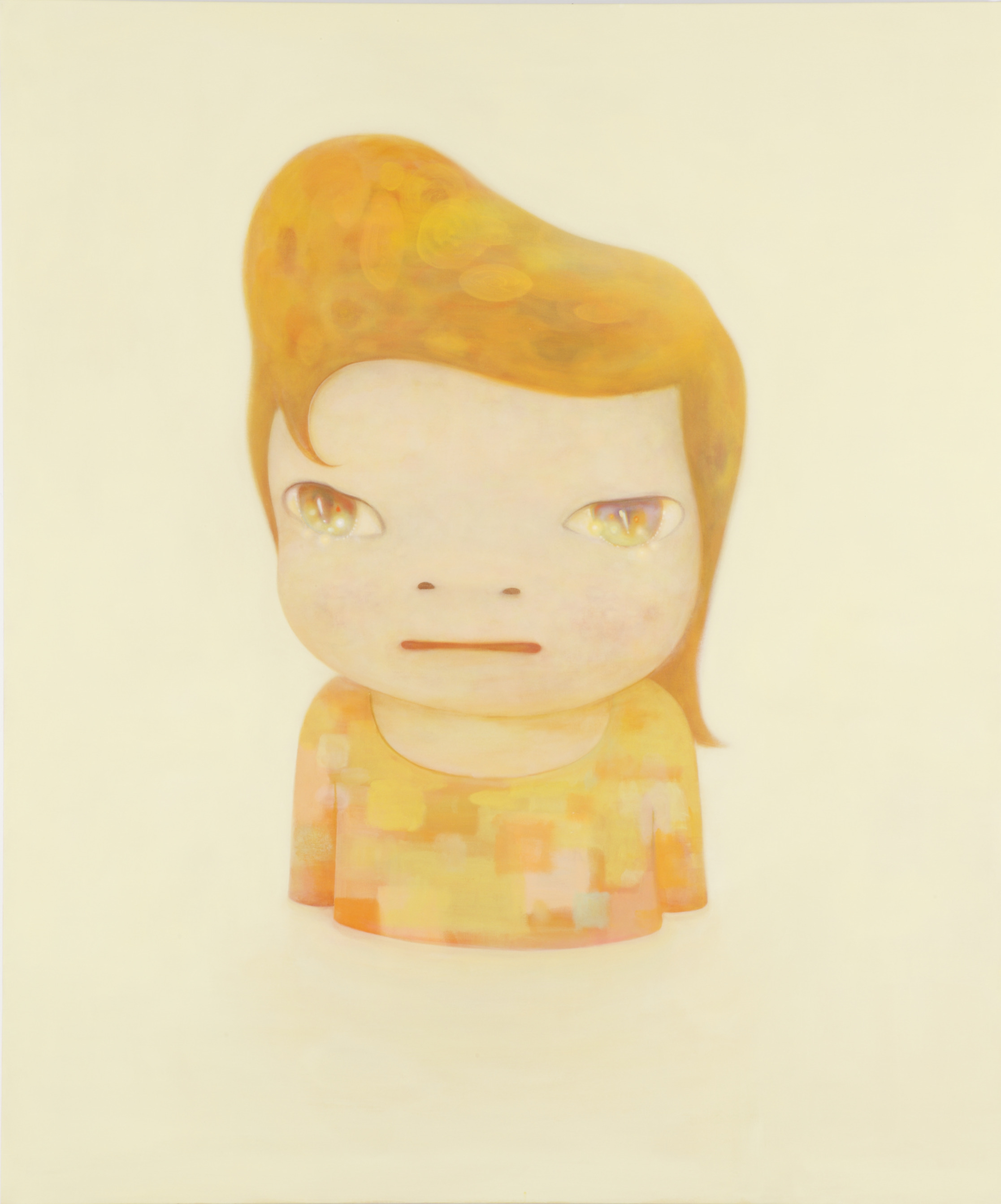
Blankey, 2012, by Yoshitomo Nara. Acrylic on canvas
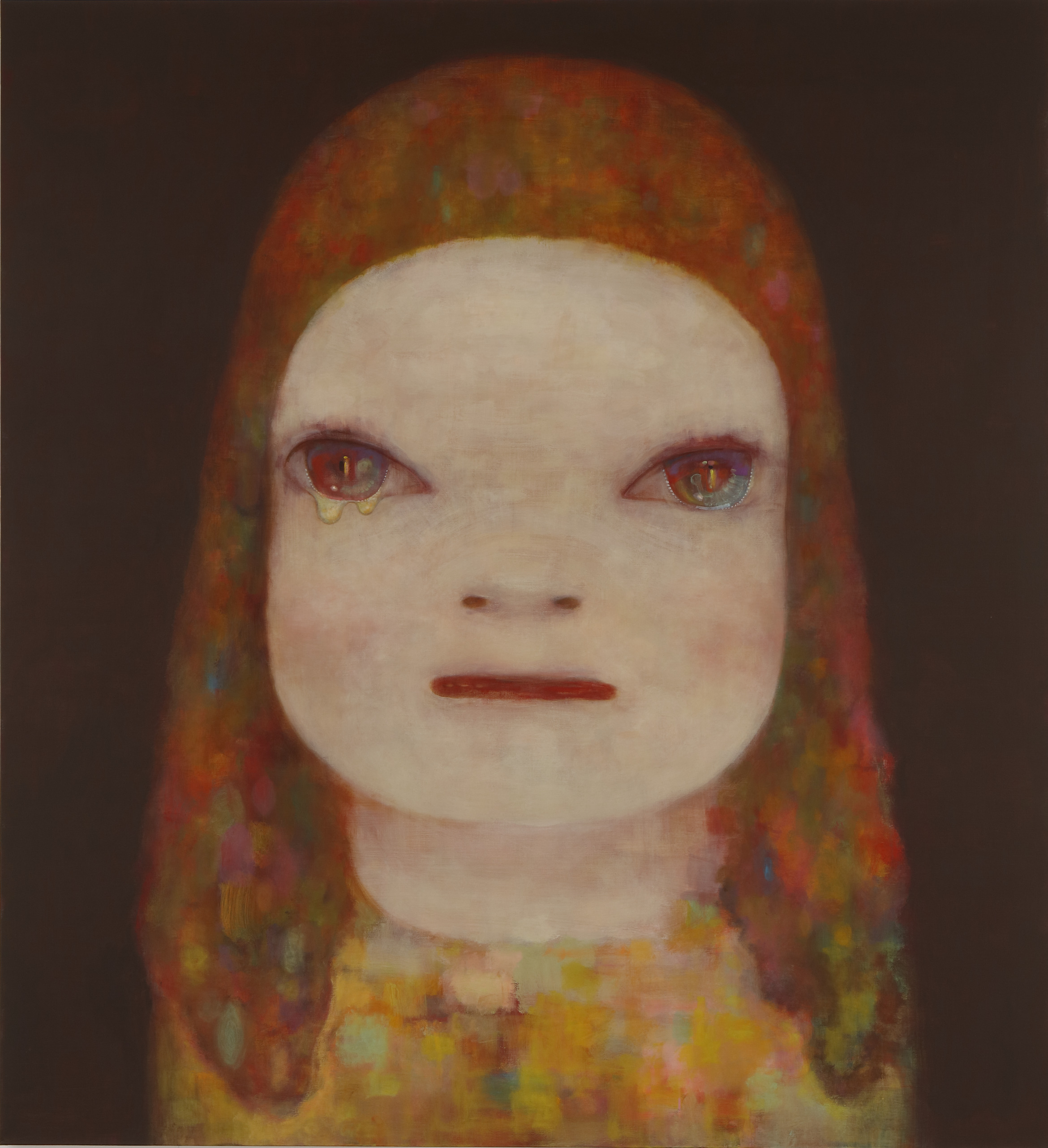
Midnight Tears, 2023, by Yoshitomo Nara. Acrylic on canvas
After spending 12 years in Germany, Nara chose to return to Japan in 2000. In 2011, the artist confronted the catastrophic aftermath of the Great East Japan earthquake, the ensuing tsunami, and the nuclear crisis at the Fukushima Daiichi power plant. These events catalysed a profound shift in his art towards a socio-political dimension, prompting him to reassess his role as an artist and confront the collective loss and suffering experienced by the affected communities.
Nara’s piece No Nukes (1998) stands as an early testament to his vehement opposition to nuclear armament. Released without royalties, this artwork became a symbol of protest against nuclear power in Tokyo in 2012. More recent works like From the Bomb Shelter (2017) continue to illustrate Nara’s ongoing advocacy of peace in contemporary society.
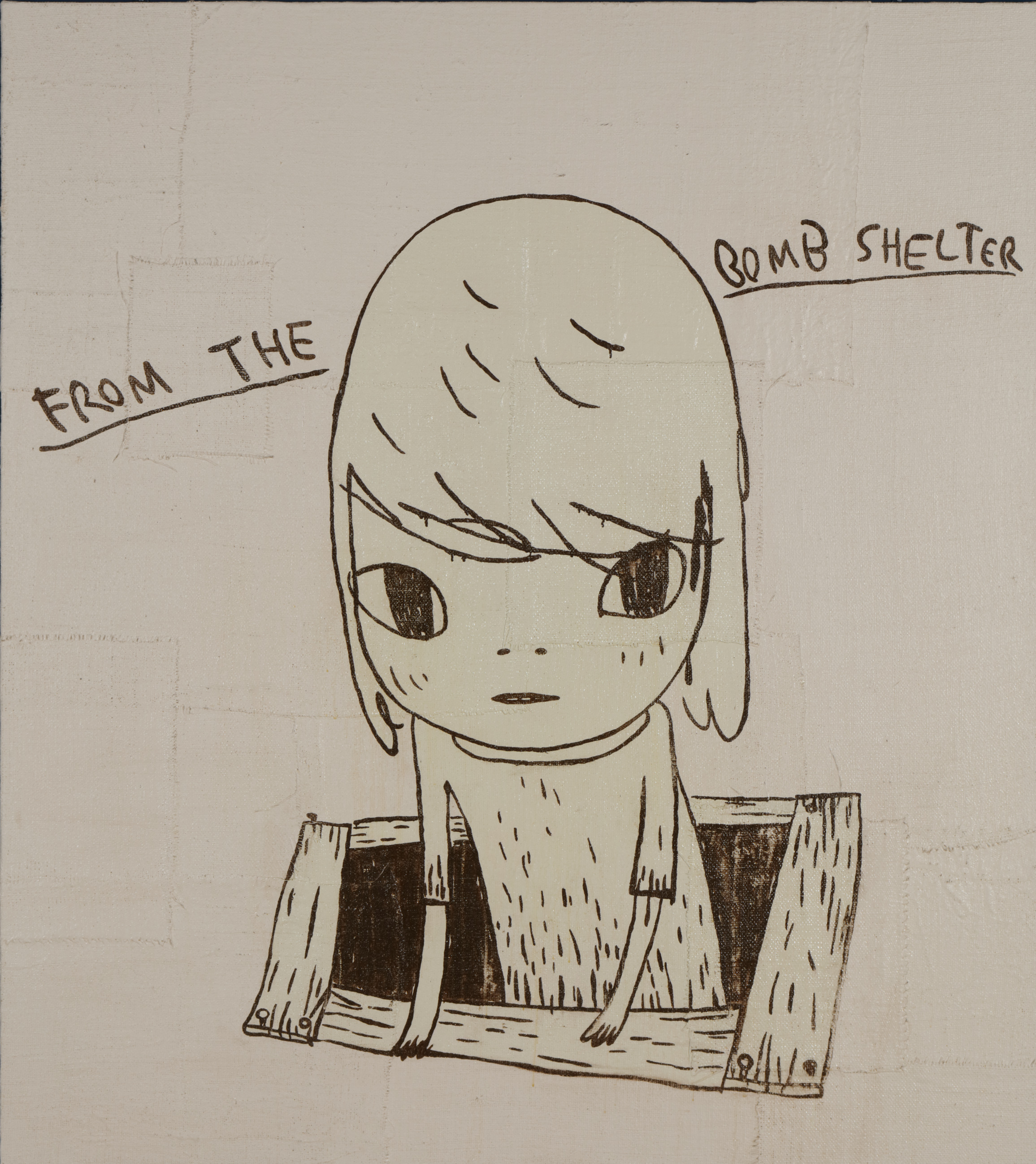
From the Bomb Shelter, 2017, by Yoshitomo Nara. Acrylic on jute mounted on wood
Our highlights of the exhibition
For Wallpaper*, the showstopping moment of the exhibition is Fountain of Life (2001/2014/2022), a sculpture akin to a celestial fountain, where tears cascade silently from the eyes of children; their overlapping heads symbolising a poignant unity. Nara’s spiritual essence, less explored in previous works, emerges, whispering messages of optimism and faith.
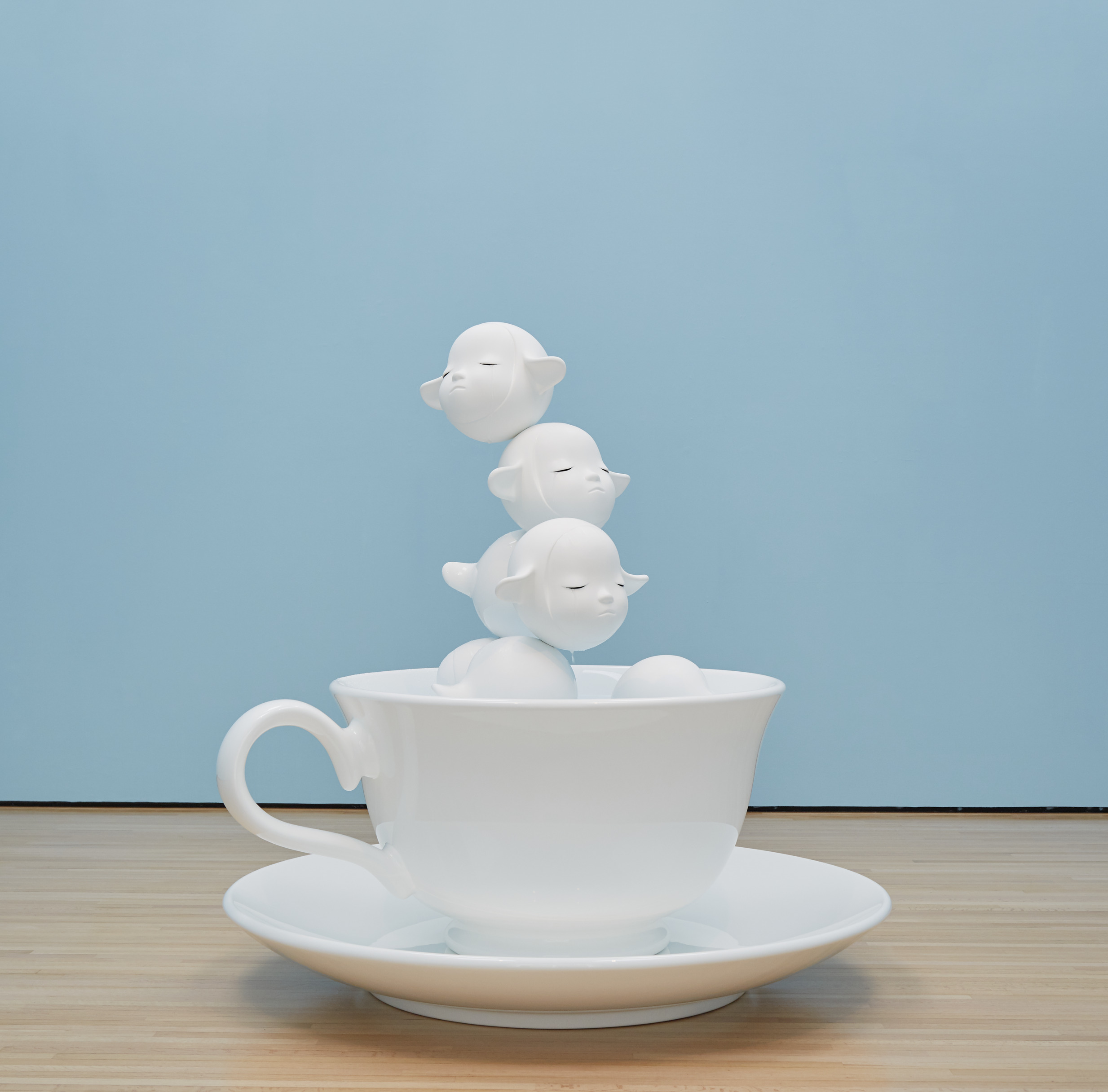
Yoshitomo Nara, Fountain of Life, 2001/2014/2022
Miss Forest (2010), resembling a slumbering woodland entity, draws upon Shinto faith, followed by Nara’s familial heritage in Hirosaki. Known as ‘Moriko’ in Japanese, the figure represented in this piece serves as a symbolic bridge connecting the cosmos, nature and humanity – an embodiment of both deep contemplation and ethereal transcendence, much like Nara’s universe.
Disasters such as the Tōhoku earthquake, tsunami and Fukushima Daiichi power plant failure prompted the artist to use clay in his work as a way to reconnect with nature. Nara explains: ‘The forest has always been around me. For a long time, I wasn’t even aware of it – I probably took it for granted. Eventually, I came to understand its importance. But I don’t think about it much, simply because it’s so deeply woven into my life and existence.’
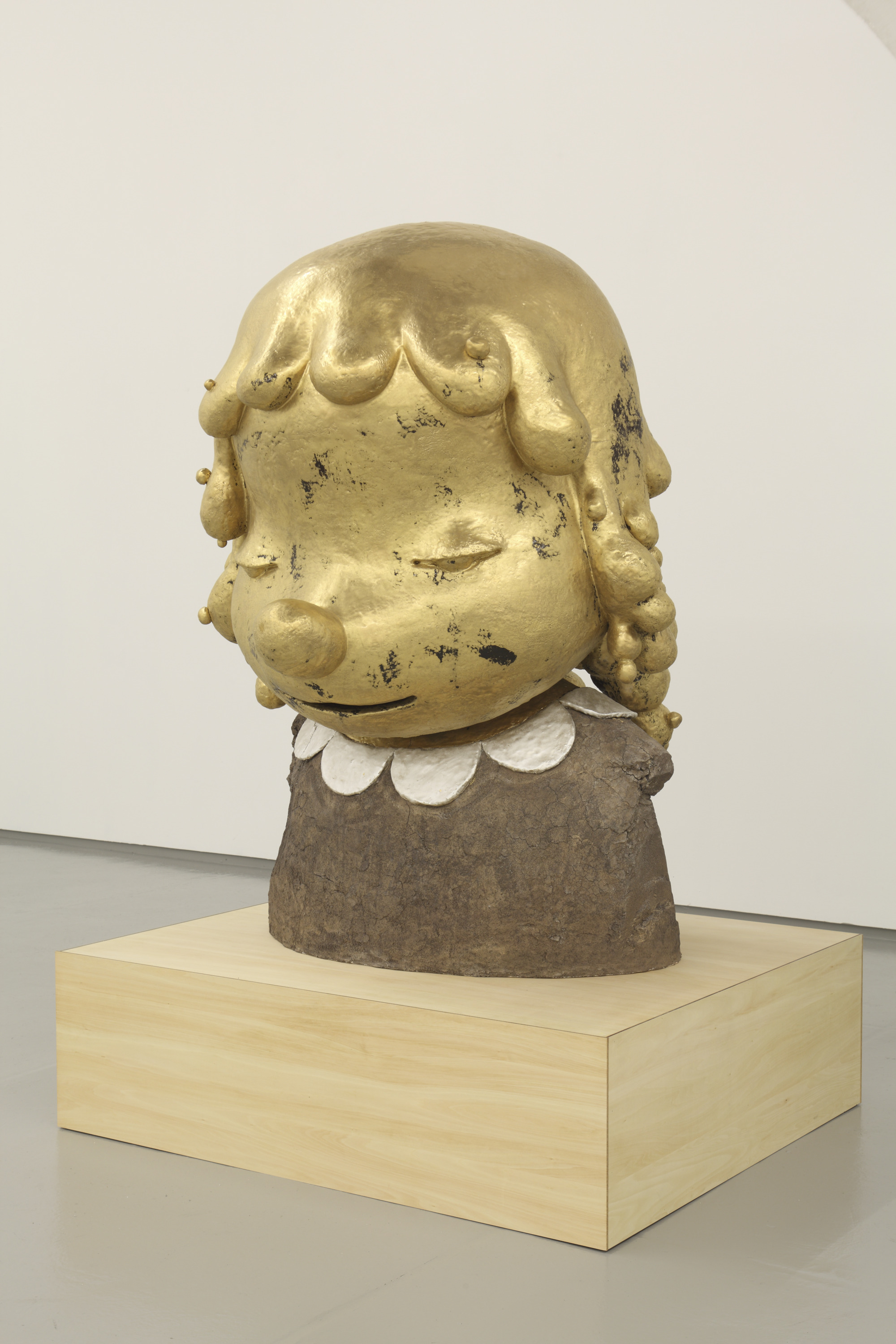
Miss Forest, 2010, by Yoshitomo Nara. Ceramic decorated with platinum, gold and silver liquid. Leeum Museum of Art, Korea
Nara is as much an architect of space as he is an artist. The way he arranges his exhibitions becomes part of the experience, shaping how viewers encounter his work. One moment, you're drawn into a cluster of small doodles; the next, you're confronted by a sprawling sculpture or a triptych of edgy caricatures. ‘There are many small paintings in the corridors, I see that as a street,’ he explains. ‘The larger rooms, where there's more space between the works, feel more like a chapel. They’re meant for reflection and introspection.’ This exhibition feels just like that.
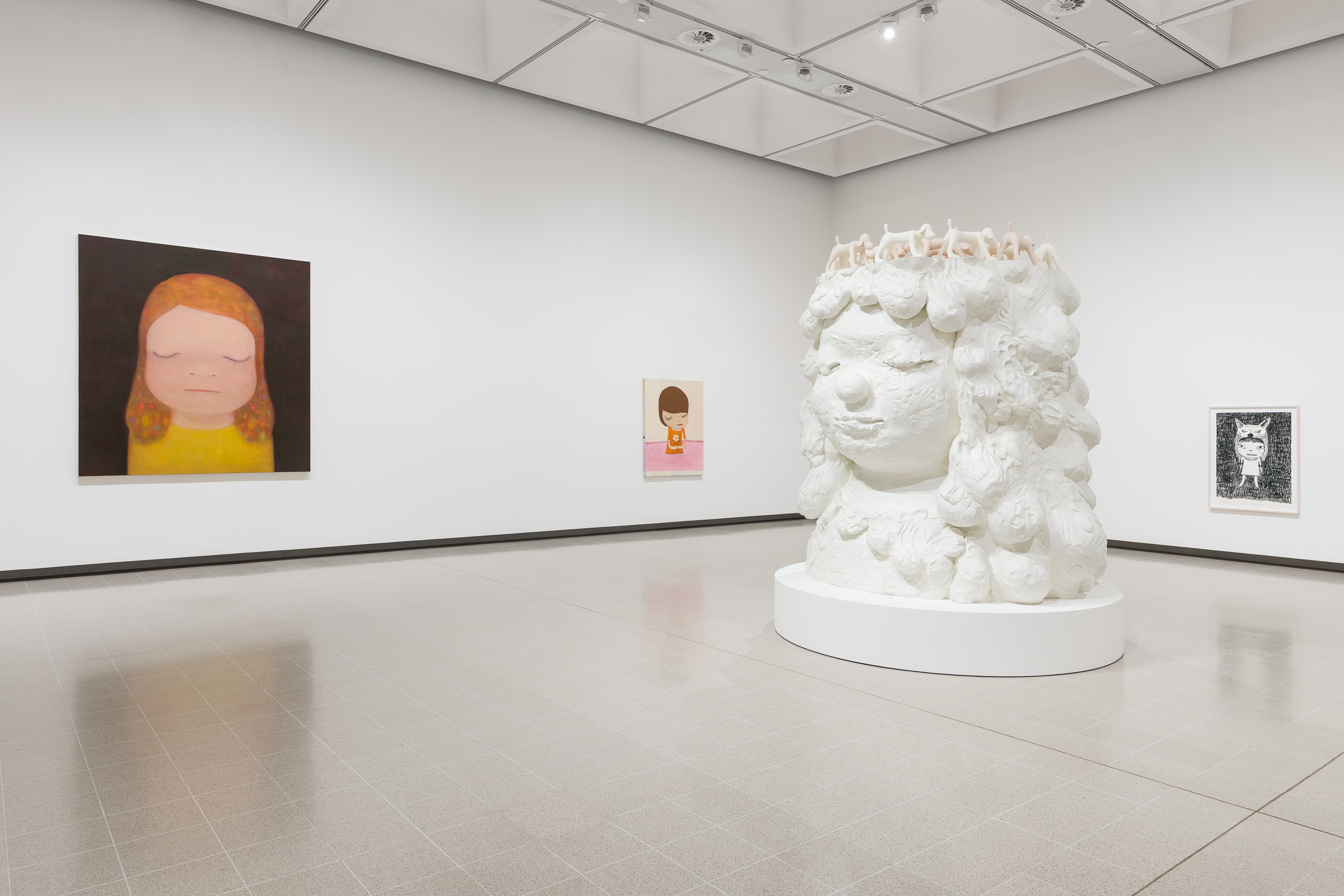
Installation view of ‘Yoshitomo Nara’
‘Yoshitomo Nara’ will be on display at the Hayward Gallery until 31 August 2025. For more information, visit southbankcentre.co.uk
Sofia de la Cruz is the Travel Editor at Wallpaper*. A self-declared flâneuse, she feels most inspired when taking the role of a cultural observer – chronicling the essence of cities and remote corners through their nuances, rituals, and people. Her work lives at the intersection of art, design, and culture, often shaped by conversations with the photographers who capture these worlds through their lens.
-
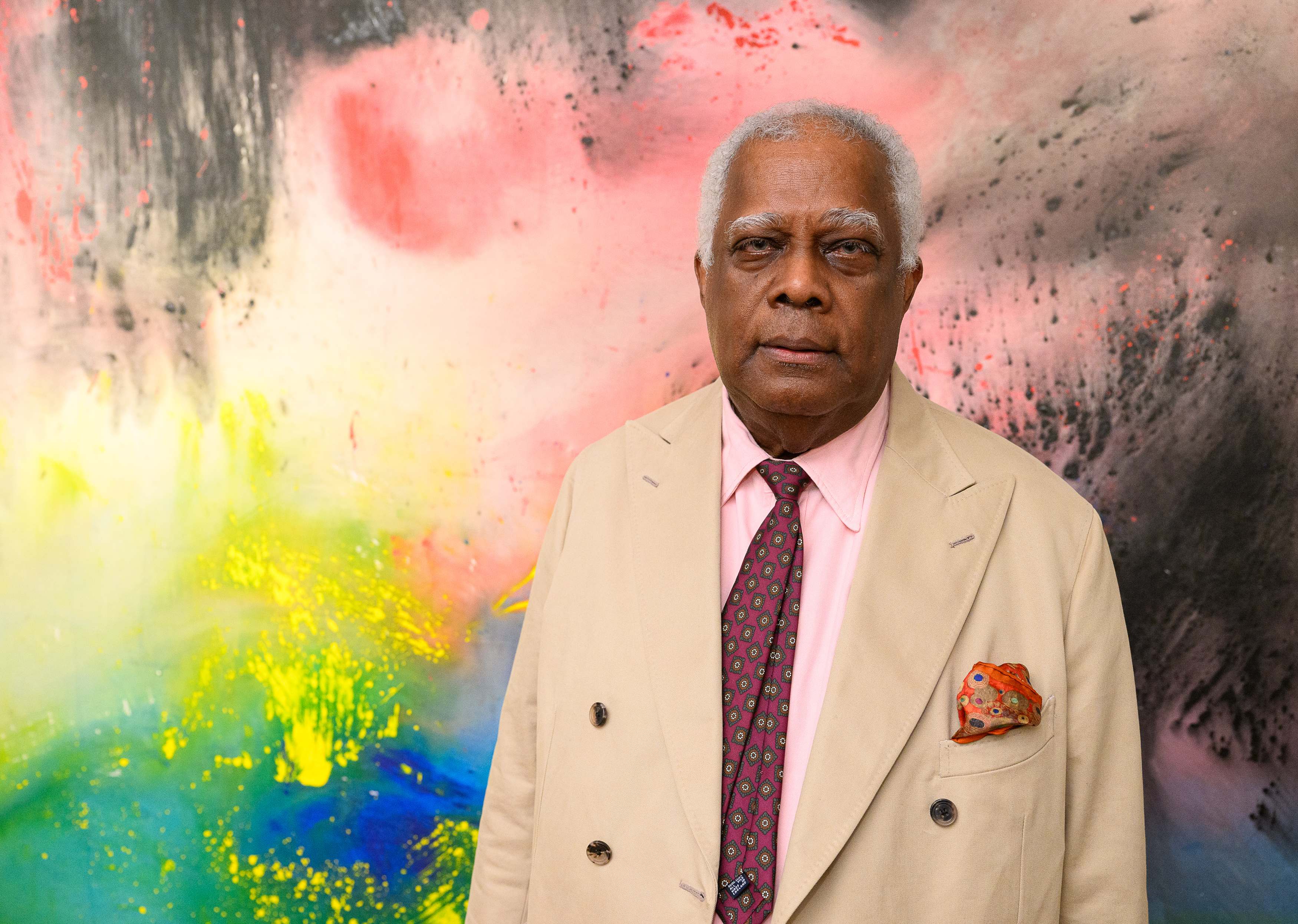 Winston Branch searches for colour and light in large-scale artworks in London
Winston Branch searches for colour and light in large-scale artworks in LondonWinston Branch returns to his roots in 'Out of the Calabash' at Goodman Gallery, London ,
-
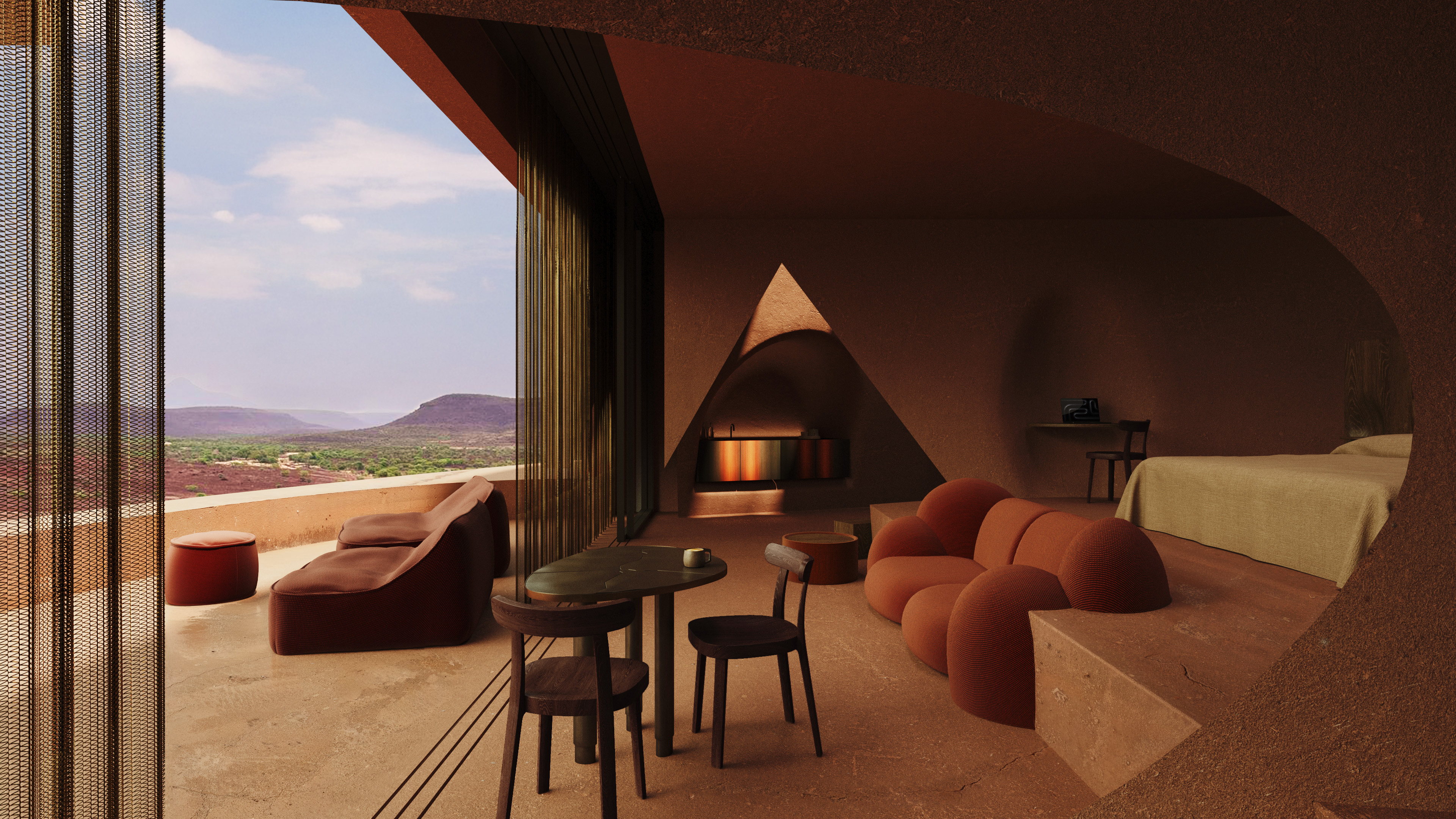 The most anticipated hotel openings of 2026
The most anticipated hotel openings of 2026From landmark restorations to remote retreats, these are the hotel debuts shaping the year ahead
-
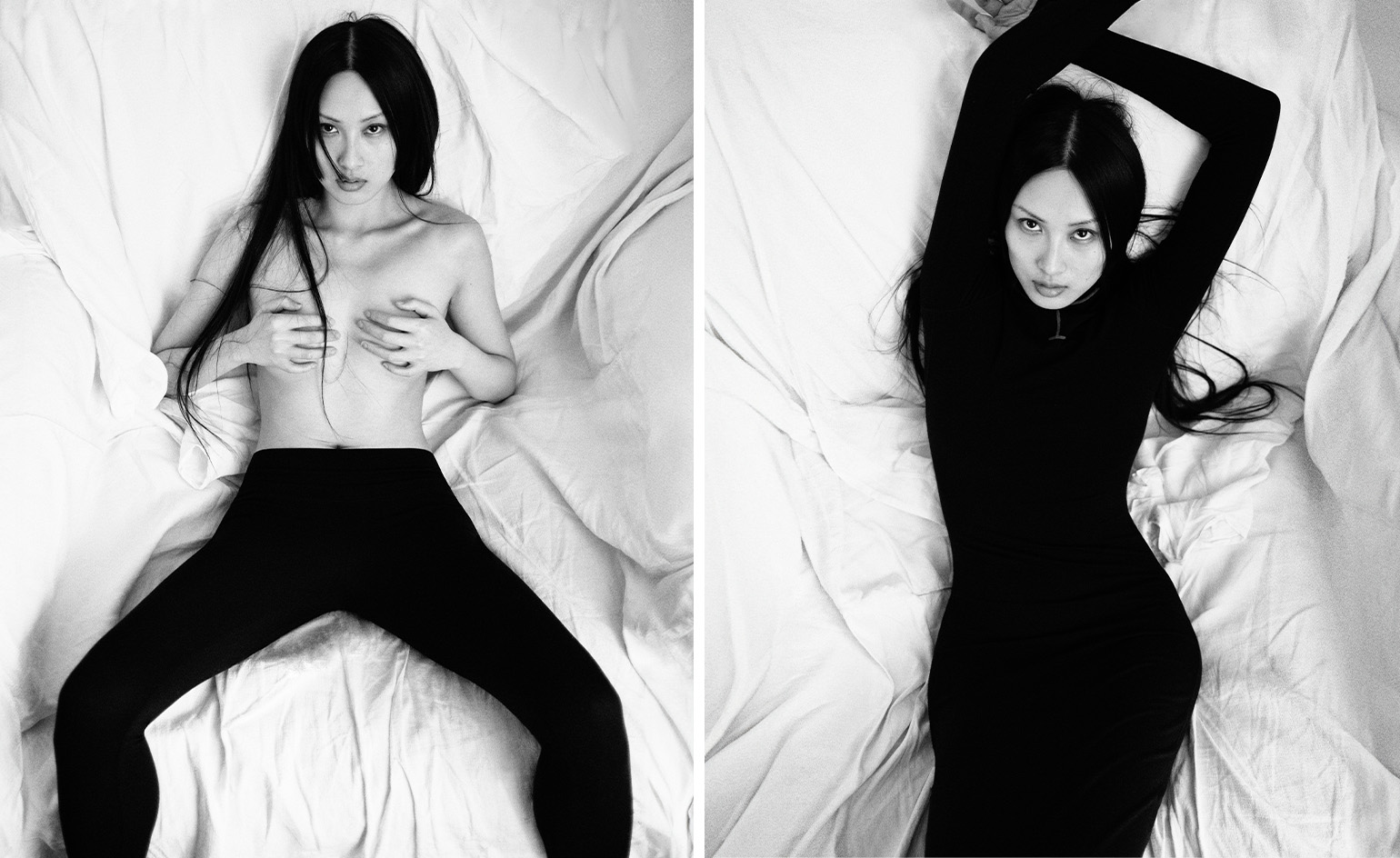 Is the future of beauty skincare you can wear? Sylva’s Tallulah Harlech thinks so
Is the future of beauty skincare you can wear? Sylva’s Tallulah Harlech thinks soThe stylist’s label, Sylva, comprises a tightly edited collection of pieces designed to complement the skin’s microbiome, made possible by rigorous technical innovation – something she thinks will be the future of both fashion and beauty
-
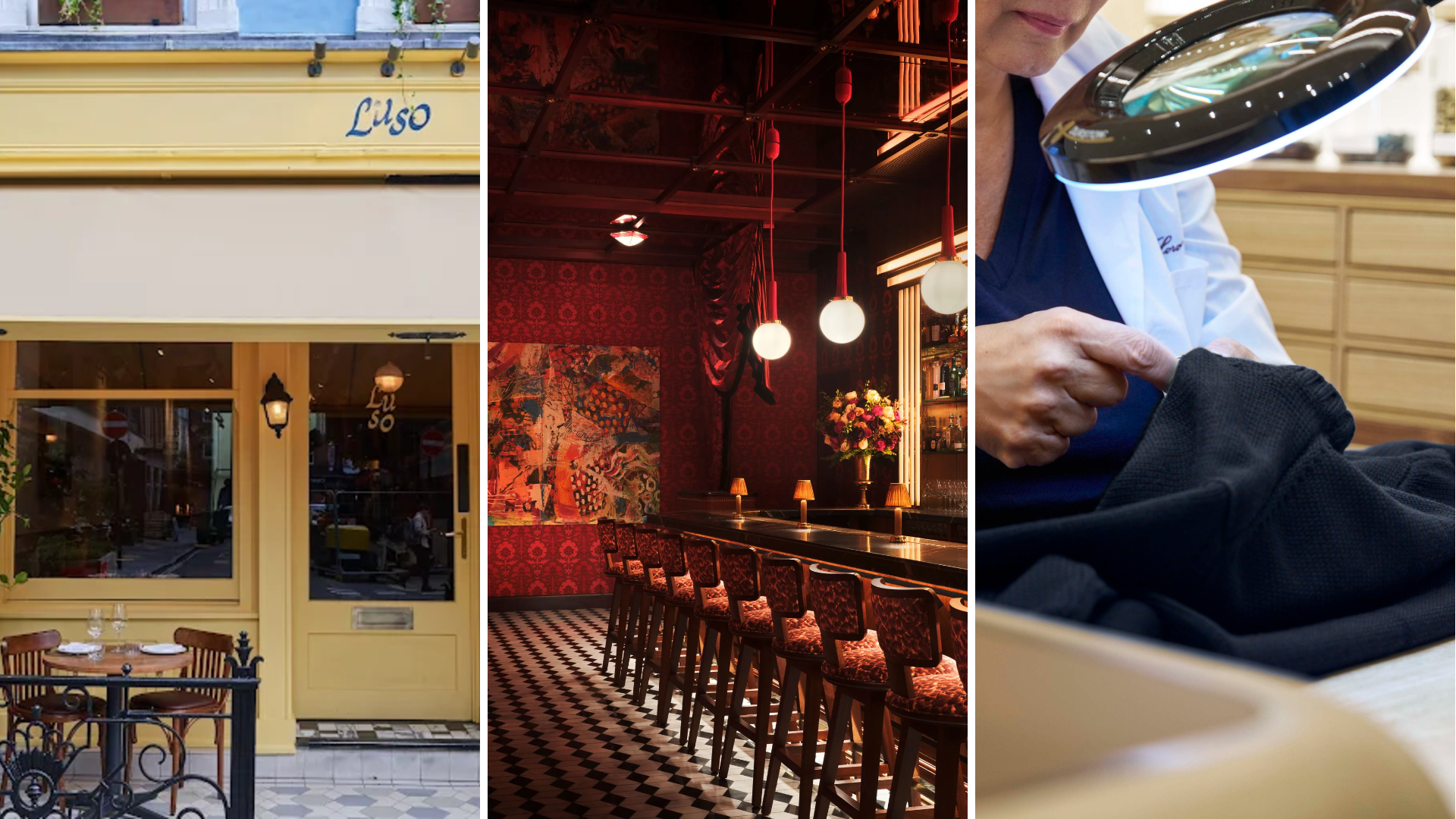 Out of office: The Wallpaper* editors’ picks of the week
Out of office: The Wallpaper* editors’ picks of the week'Tis the season for eating and drinking, and the Wallpaper* team embraced it wholeheartedly this week. Elsewhere: the best spot in Milan for clothing repairs and outdoor swimming in December
-
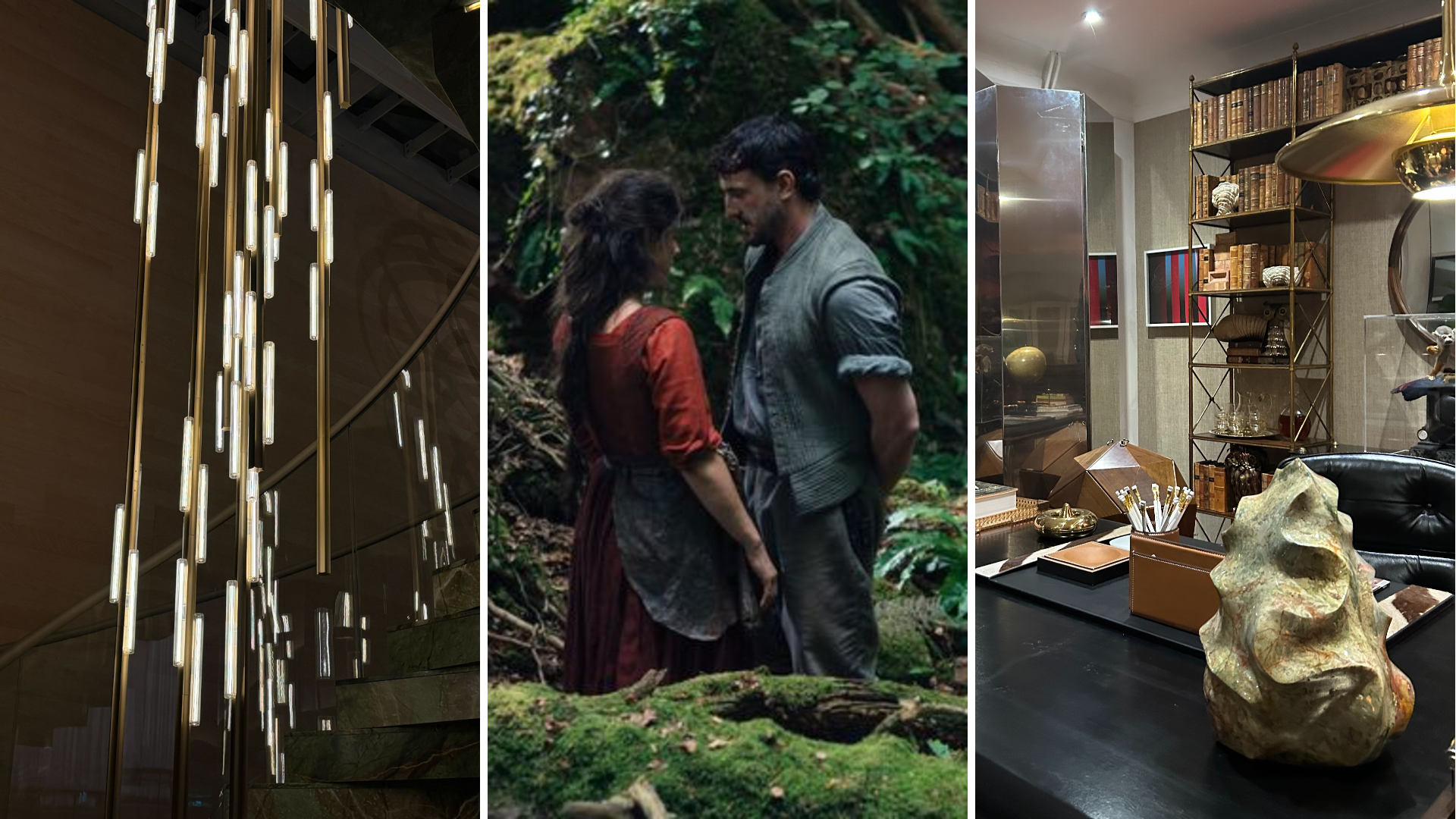 Out of office: The Wallpaper* editors’ picks of the week
Out of office: The Wallpaper* editors’ picks of the weekFar from slowing down for the festive season, the Wallpaper* team is in full swing, hopping from events to openings this week. Sometimes work can feel like play – and we also had time for some festive cocktails and cinematic releases
-
 The Barbican is undergoing a huge revamp. Here’s what we know
The Barbican is undergoing a huge revamp. Here’s what we knowThe Barbican Centre is set to close in June 2028 for a year as part of a huge restoration plan to future-proof the brutalist Grade II-listed site
-
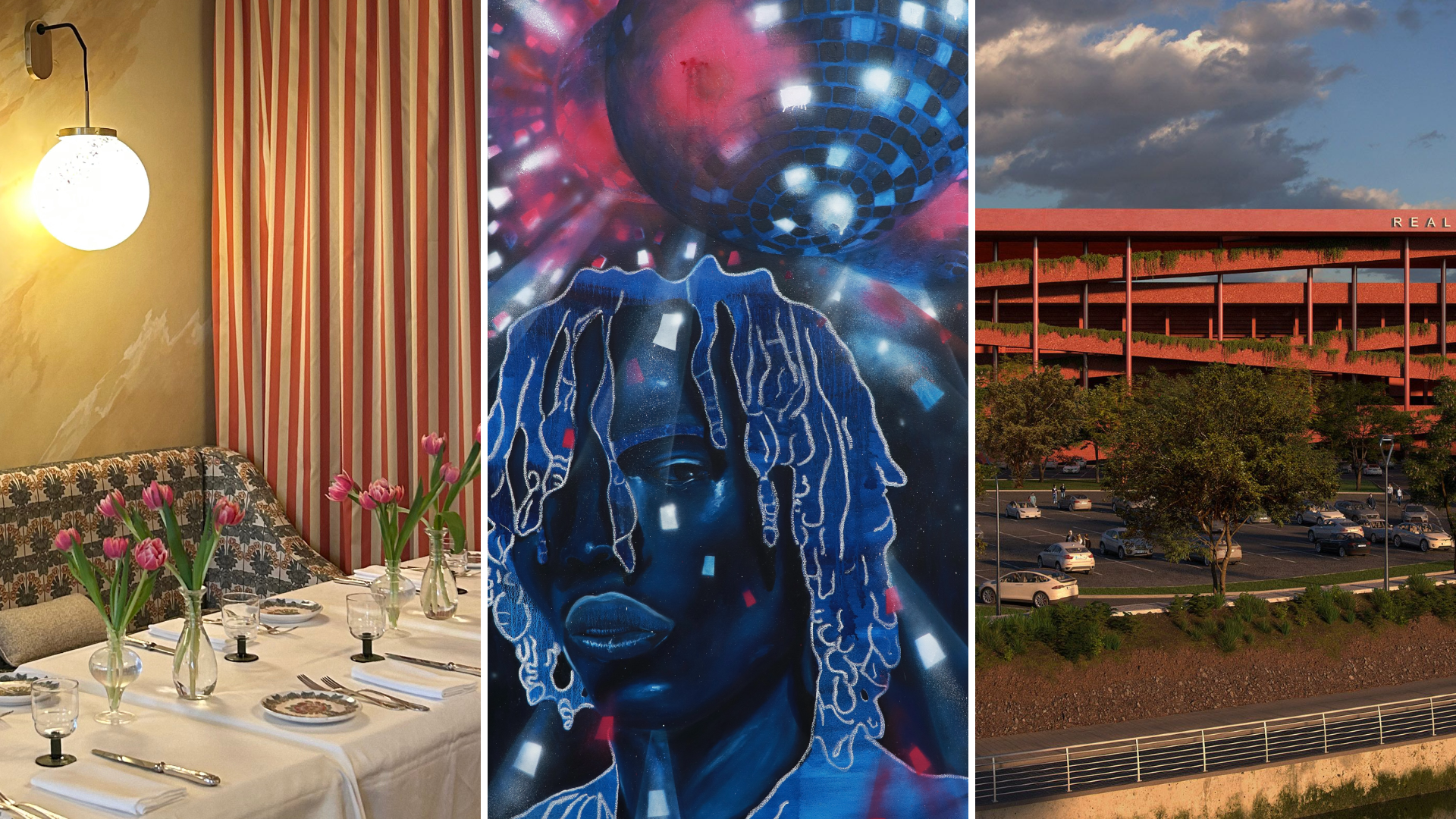 Out of office: The Wallpaper* editors’ picks of the week
Out of office: The Wallpaper* editors’ picks of the weekIt’s wet, windy and wintry and, this week, the Wallpaper* team craved moments of escape. We found it in memories of the Mediterranean, flavours of Mexico, and immersions in the worlds of music and art
-
 Each mundane object tells a story at Pace’s tribute to the everyday
Each mundane object tells a story at Pace’s tribute to the everydayIn a group exhibition, ‘Monument to the Unimportant’, artists give the seemingly insignificant – from discarded clothes to weeds in cracks – a longer look
-
 Out of office: The Wallpaper* editors’ picks of the week
Out of office: The Wallpaper* editors’ picks of the weekThis week, the Wallpaper* team had its finger on the pulse of architecture, interiors and fashion – while also scooping the latest on the Radiohead reunion and London’s buzziest pizza
-
 Out of office: The Wallpaper* editors’ picks of the week
Out of office: The Wallpaper* editors’ picks of the weekIt’s been a week of escapism: daydreams of Ghana sparked by lively local projects, glimpses of Tokyo on nostalgic film rolls, and a charming foray into the heart of Christmas as the festive season kicks off in earnest
-
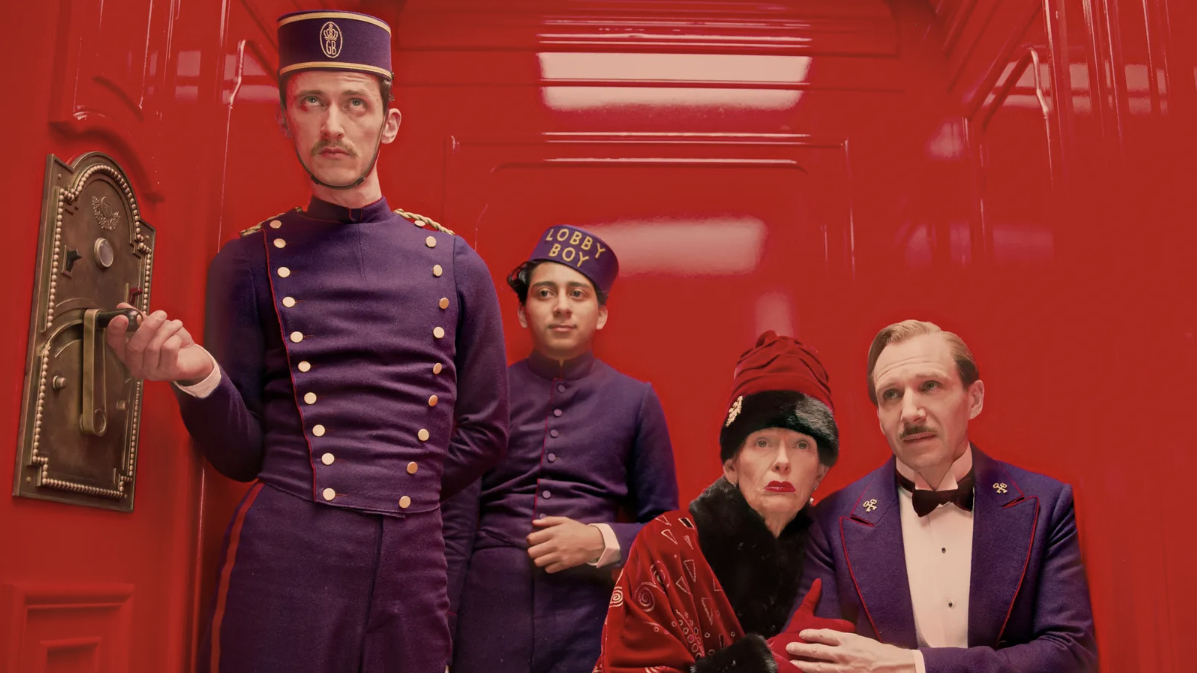 Wes Anderson at the Design Museum celebrates an obsessive attention to detail
Wes Anderson at the Design Museum celebrates an obsessive attention to detail‘Wes Anderson: The Archives’ pays tribute to the American film director’s career – expect props and puppets aplenty in this comprehensive London retrospective